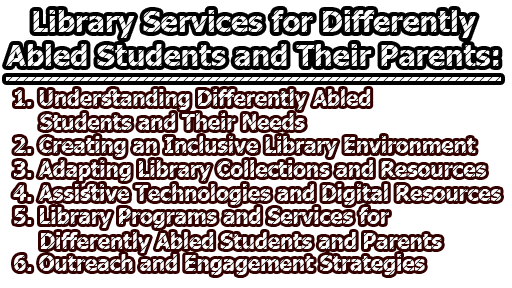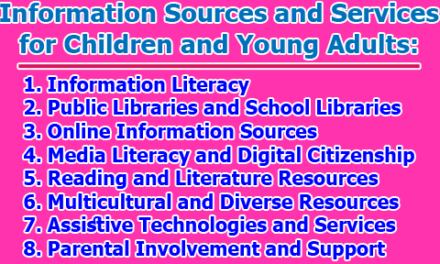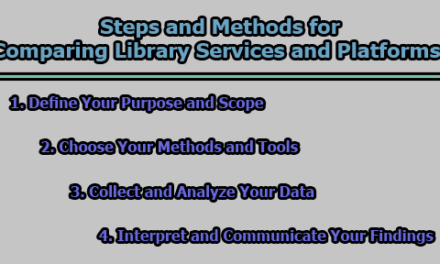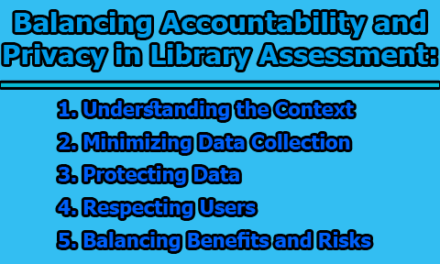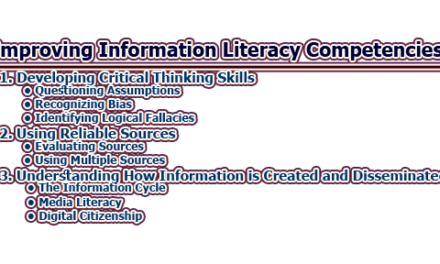Library Services for Differently Abled Students and Their Parents:
Libraries are vital institutions that support education, information access, and personal development. In order to foster inclusive education, libraries must recognize and address the diverse needs of differently-abled students and their parents. By providing tailored services, resources, and programs, libraries can ensure equitable access to information and promote educational opportunities for all individuals. In this article, we will explore the library services for differently abled students and their parents.
1. Understanding Differently Abled Students and Their Needs:
1.1 Overview of different types of disabilities:
Differently-abled students encompass a wide range of disabilities, including physical, sensory, cognitive, and learning disabilities. Physical disabilities may affect mobility or dexterity, while sensory disabilities can impact vision, hearing, or communication. Cognitive disabilities, such as autism or intellectual disabilities, can affect information processing and comprehension. Learning disabilities, such as dyslexia or attention deficit hyperactivity disorder (ADHD), impact academic skills. It is crucial for libraries to understand the unique needs associated with each disability type.
1.2 Challenges faced by differently-abled students in accessing library services:
Differently-abled students often encounter barriers when utilizing library services. Physical obstacles, such as inaccessible buildings or furniture, can limit their access to library spaces. A lack of appropriate assistive technologies and adaptive equipment can hinder their ability to navigate library resources. Inadequate staff training and awareness about disabilities may result in unintentional exclusion. Libraries must address these challenges to create a welcoming and inclusive environment for all students.
1.3 Importance of parental involvement in supporting their children’s educational journey:
Parents play a crucial role in supporting the educational development of differently-abled students. They are often advocates for their children, ensuring their needs are met and facilitating access to resources. Libraries can engage parents through programs, workshops, and support groups to provide guidance and empower them in their role as partners in their child’s education.
2. Creating an Inclusive Library Environment:
2.1 Physical accessibility:
Libraries should ensure that their facilities are physically accessible to all individuals. This includes wheelchair ramps, elevators, accessible restrooms, and designated parking spaces. Clear signage, color contrast, and tactile markers can aid navigation. Libraries should also consider the layout and arrangement of furniture to accommodate different mobility needs.
2.2 Technological accessibility:
Libraries should offer a range of assistive technologies to support differently-abled students. This may include screen readers, magnification software, text-to-speech converters, alternative input devices, and adaptive computer hardware. Training staff to assist users in utilizing these technologies is essential for a seamless experience.
2.3 Staff training and awareness:
Libraries should provide comprehensive training to their staff members to ensure they are knowledgeable about disabilities, assistive technologies, and best practices for inclusive services. Staff should be sensitive to the needs of differently-abled students, provide assistance when required, and create a welcoming and respectful environment for all users.
2.4 Collaboration with disability service providers:
Libraries can establish partnerships with local disability service providers, such as rehabilitation centers or disability advocacy organizations. These collaborations can facilitate information sharing, resource provision, and professional development opportunities. By working together, libraries and disability service providers can enhance support for differently abled students and their parents.
3. Adapting Library Collections and Resources:
3.1 Assistive Technologies and adaptive equipment:
Libraries should invest in assistive technologies and adaptive equipment to improve access to library resources. This may include accessible computer stations, adjustable furniture, assistive listening devices, and adaptive reading devices. Making these resources available ensures that differently-abled students can independently access and engage with library materials.
3.2 Accessible formats (e.g., Braille, large print, audio):
Libraries should offer materials in accessible formats to cater to different sensory needs. This can include Braille books, large print materials, and audiobooks. Collaborating with publishers and organizations specializing in accessible formats can enhance the availability of these resources.
3.3 Diverse materials and resources on disabilities:
Libraries should curate collections that encompass a diverse range of materials related to disabilities. This includes books, documentaries, films, and websites that provide information, support, and representation for differently-abled individuals. These resources can promote awareness, understanding, and inclusivity within the library and the broader community.
3.4 Multilingual and multicultural resources:
Libraries should consider the linguistic and cultural diversity of their user population. Providing resources in different languages and representing diverse cultures can ensure that all users, including differently-abled students and their parents, feel acknowledged and included.
4. Assistive Technologies and Digital Resources:
4.1 Overview of assistive technologies:
Assistive technologies are critical tools for differently abled students to access and navigate library resources. These technologies include screen readers, text-to-speech software, speech recognition software, alternative keyboards, and switches. Libraries should offer training and support to help users maximize the benefits of these technologies.
4.2 Accessible library catalogs and databases:
Library catalogs and databases should be designed to be accessible to individuals with disabilities. This includes ensuring compatibility with assistive technologies, providing alternative formats for search results, and incorporating accessibility features such as keyboard navigation and text resizing.
4.3 E-books, e-audiobooks, and digital media accessibility:
Libraries can expand their digital collections to include e-books and e-audiobooks, which provide accessible formats for differently abled students. Additionally, digital media, such as online videos and interactive learning resources, should be designed with accessibility in mind, incorporating closed captions, audio descriptions, and accessible navigation.
4.4 Online resources and databases for differently abled students:
Libraries should curate online resources and databases specifically designed for differently abled students. These resources can include educational platforms, research databases, and websites that offer tailored content, learning support, and accessibility features for various disabilities.
5. Library Programs and Services for Differently Abled Students and Parents:
5.1 Sensory-friendly storytimes and events:
Libraries can organize sensory-friendly storytimes and events that accommodate the needs of differently-abled students. These programs may involve adjusted lighting, reduced noise levels, tactile elements, and visual schedules to create a comfortable and inclusive environment for sensory-sensitive individuals.
5.2 Parenting support groups and workshops:
Libraries can provide parenting support groups and workshops that offer guidance, resources, and opportunities for parents of differently-abled students to connect and share experiences. Topics may include navigating the educational system, accessing community resources, and fostering inclusive learning environments at home.
5.3 Specialized programs for different disabilities:
Libraries can develop specialized programs tailored to specific disabilities. For instance, programs focused on learning strategies for students with dyslexia, study skills workshops for students with attention disorders, or coding programs for students on the autism spectrum. These programs address specific needs and provide opportunities for skill development and social interaction.
5.4 Collaborative partnerships with disability organizations and schools:
Libraries should foster collaborations with disability organizations, schools, and educational institutions to enhance their programs and services. Joint initiatives can include resource sharing, co-hosting events, and engaging professionals with expertise in disabilities to deliver workshops and training sessions.
6. Outreach and Engagement Strategies:
6.1 Promoting library services to the differently abled community:
Libraries should actively promote their inclusive services to the differently abled community through various channels. This can include disseminating information through disability organizations, schools, community centers, and social media platforms. Promotional materials should highlight the library’s commitment to accessibility and inclusivity.
6.2 Advocacy and awareness campaigns:
Libraries can engage in advocacy and awareness campaigns to promote understanding and acceptance of differently abled individuals. These campaigns can include hosting panel discussions, inviting guest speakers, organizing disability awareness events, and collaborating with community stakeholders to raise awareness about the rights and needs of the differently abled population.
6.3 Community Partnerships and Collaborations:
Libraries should foster partnerships with local community organizations to expand their reach and better serve the needs of differently-abled students and their parents. Collaborative efforts may involve joint programming, resource sharing, and knowledge exchange to enhance the support provided to the community.
6.4 Tailoring outreach efforts to different disabilities and cultural backgrounds:
Libraries should ensure that their outreach efforts are culturally sensitive and address the unique needs of different disabilities. By tailoring outreach strategies, libraries can effectively engage with diverse communities and provide targeted support that respects and acknowledges their cultural perspectives.
In conclusion, libraries have a significant role to play in ensuring that differently-abled students and their parents have equitable access to educational resources and opportunities. By implementing the recommendations outlined in this paper, libraries can create inclusive environments that empower individuals with disabilities, promote lifelong learning, and contribute to a more inclusive society. Through collaborative efforts and a commitment to continuous improvement, libraries can truly make a difference in the lives of differently-abled students and their families.
FAQs:
What are some common challenges faced by differently-abled students in accessing library services?
Differently-abled students may face challenges such as physical barriers (inaccessible buildings or furniture), lack of appropriate assistive technologies and adaptive equipment, limited availability of accessible formats, and a lack of staff training and awareness about disabilities.
How can libraries improve physical accessibility for differently-abled students?
Libraries can improve physical accessibility by installing wheelchair ramps, elevators, accessible restrooms, and designated parking spaces. They should also ensure clear signage, color contrast, and tactile markers to aid navigation. The layout and arrangement of the furniture should be inclusive, considering different mobility needs.
What assistive technologies should libraries provide for differently abled students?
Libraries should provide a range of assistive technologies, such as screen readers, magnification software, text-to-speech converters, alternative input devices, and adaptive computer hardware. These technologies support differently-abled students in accessing and navigating library resources.
How can libraries engage and support parents of differently-abled students?
Libraries can organize parenting support groups, workshops, and events that provide guidance, resources, and opportunities for parents of differently-abled students to connect and share experiences. Additionally, libraries can collaborate with schools and disability organizations to offer specialized programs and services for parents.
How can libraries promote awareness and understanding of disabilities?
Libraries can engage in advocacy and awareness campaigns, such as hosting panel discussions, inviting guest speakers, organizing disability awareness events, and collaborating with community stakeholders. These efforts contribute to raising awareness about the rights and needs of differently abled individuals.
What are some examples of specialized programs for differently abled students?
Specialized programs can include learning strategies for students with specific disabilities, study skills workshops, coding programs, and social skills development activities. These programs address the unique needs and interests of differently-abled students, fostering their educational and personal growth.
How can libraries ensure the accessibility of their digital resources?
Libraries should ensure that their online platforms, catalogs, and databases are compatible with assistive technologies. They should provide alternative formats, incorporate accessibility features such as keyboard navigation and text resizing, and ensure compatibility with screen readers and other assistive tools.
How can libraries collaborate with disability service providers?
Libraries can establish partnerships with local disability service providers, such as rehabilitation centers or disability advocacy organizations. These collaborations facilitate information sharing, resource provision, and professional development opportunities, improving support for differently abled students and their parents.
How can libraries promote inclusive services to the differently abled community?
Libraries can promote their inclusive services through various channels, including disability organizations, schools, community centers, and social media platforms. They should emphasize their commitment to accessibility and inclusivity in promotional materials and actively engage with the community.
How can libraries evaluate the effectiveness of their services for differently abled students?
Libraries can evaluate the effectiveness of their services through various methods, including measuring impact and outcomes, conducting user feedback and satisfaction surveys, and implementing continuous improvement processes. Feedback from differently-abled students and their parents is valuable in assessing the accessibility and relevance of library services.
References:
- American Library Association. (2018). Libraries and the ADA: A Toolkit for Serving Patrons with Disabilities.
- Association of College and Research Libraries. (2012). Guidelines for Services to Persons with Disabilities.
- Ball, D., & Matarazzo, J. M. (Eds.). (2000). Library Services for Youth with Special Needs: A Resource and Planning Guide. American Library Association.
- Chan, K. W. (2015). Accessibility in libraries: Library services for differently-abled users in Hong Kong. The Journal of Academic Librarianship, 41(6), 749-759.
- DeSanto, B. M., & Saito, L. P. (Eds.). (2017). Serving patrons with disabilities: A how-to-do-it manual for librarians. Neal-Schuman Publishers.
- International Federation of Library Associations and Institutions (IFLA). (2017). Guidelines for Library Services to Persons with Dyslexia.
- Kaul, A., & Rath, P. (2019). Enhancing library services for differently-abled users: A case study of an Indian university library. Collection Building, 38(1), 1-8.
- Kotze, R., & Smiraglia, R. P. (2016). Designing libraries for users with autism: A comprehensive guide. Rowman & Littlefield.
- Ministry of Education. (2014). Guidelines on Library Services for Persons with Disabilities.
- Reid, C., & Zakariya, A. (Eds.). (2014). Library services for multicultural patrons: Strategies to encourage library use. Rowman & Littlefield.
- Special Library Association (SLA). (2017). The Special Library Association’s Commitment to Diversity and Inclusion: Special Libraries, Special People, Special Service.
- The American Association of School Librarians (AASL). (2019). National School Library Standards for Learners, School Librarians, and School Libraries.
- The International Federation of Library Associations and Institutions (IFLA). (2018). IFLA Guidelines for Library Services to Persons with Disabilities.
- The Library of Congress. (2020). Library Services for People with Disabilities: Policy and Procedures.
- World Blind Union (WBU) and International Federation of Library Associations and Institutions (IFLA). (2013). The Marrakesh Treaty: Making a Difference for People with Print Disabilities.

Former Student at Rajshahi University

